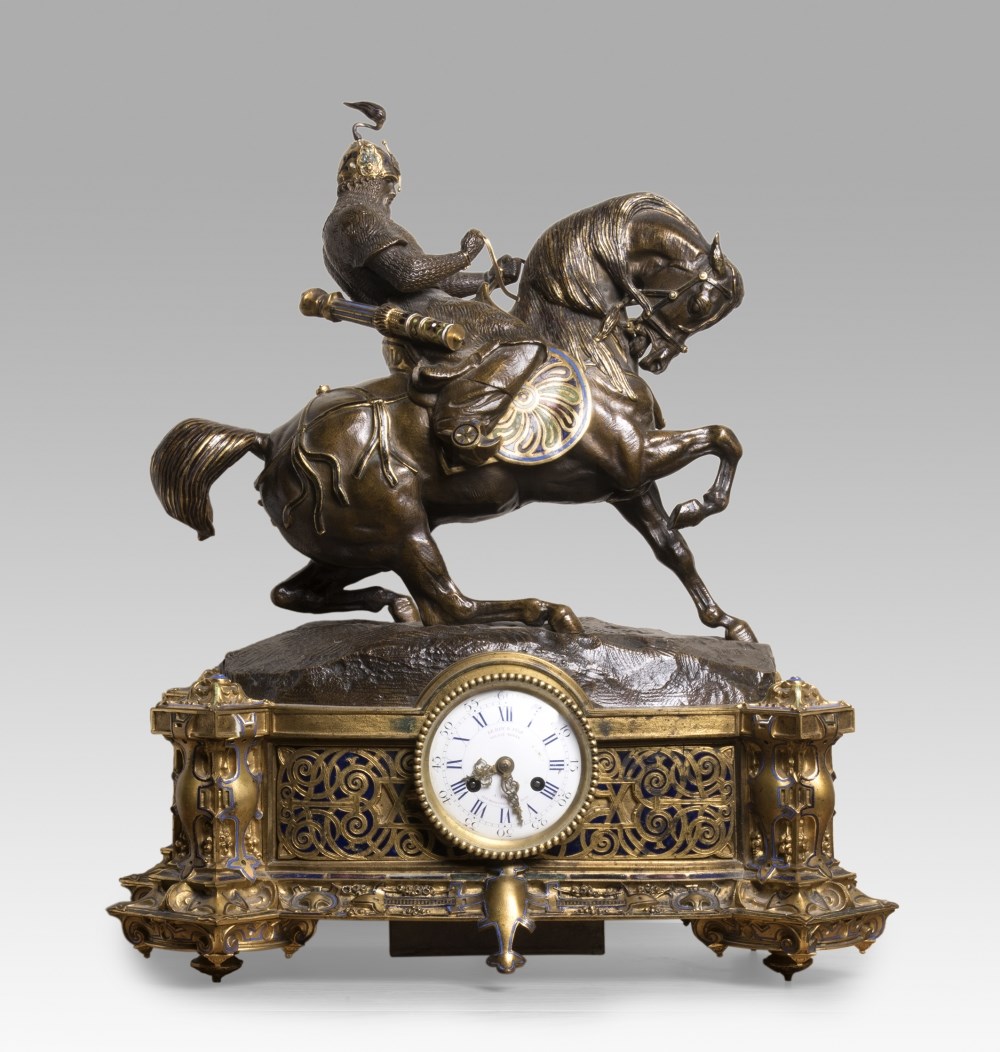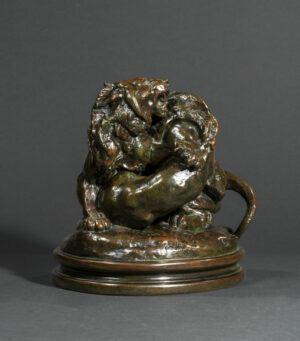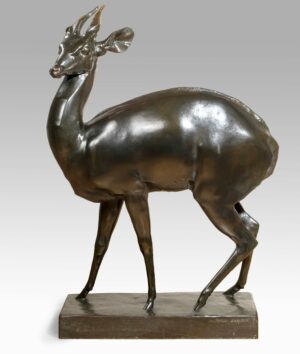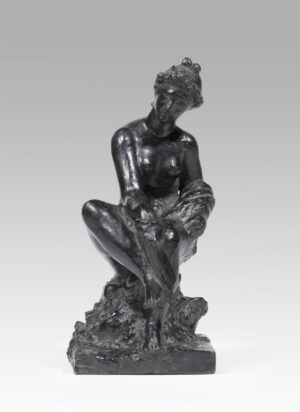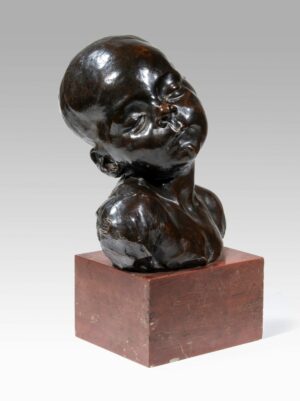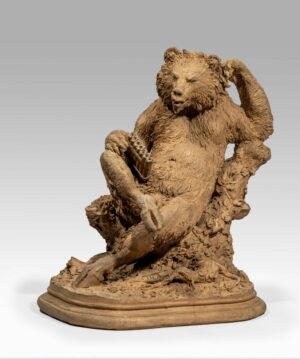Description
One of Barye’s most famous sculptures, it is to be compared with the Tartar Horseman without helmet, belonging to the Elk Hunting of the Duc d’Orléans’ centrepiece, which was for Barye a source of rich inspiration for his future compositions. Initially named the Chinese Rider, the model came in several versions with numerous variations in the horse’s harness, the rider’s armour and plume.
A remarkable expression of romantic ardour, the warrior with his shoulders back and feathers flying, halts his horse in full action. The tension between the rider and his mount is palpable down to the smallest detail. The two bodies are but one. But what prevails the most in our model is the exoticism of the subject enhanced by the richness of the champlevé enamel ornamentation and the gilding of the mane, tail, quiver, saddle and reins. There is but one polychrome version of this model known, currently held in the Musée d’Orsay, on its Byzantine base (Inv.OAO 1175), which was exhibited at the 1855 Exposition Universelle. These two exceptional casts, sculptural works of the statuary transformed into pure decorative objects, are characteristic of the Barye-Martin association which lasted from 1845 to 1857. For this polychrome work, Émile Martin had recourse to several artists. He had to proceed with a new chiselling in order to ‘arrange’ the coloured enamel in certain places and it was the sculptor Charles Cordier, then twenty-eight years old, the winner of a Médaille Honorable at the 1855 Exposition Universelle, who most often advised Barye on the ‘arrangement’ of the enamel on ‘the proofs’. One can easily imagine the success this type of picturesque statuette – pendulum, single piece or mantel clock – had on a bourgeois clientele eager to enrich their decor.
There are only two examples in enamelled bronze known to date.

